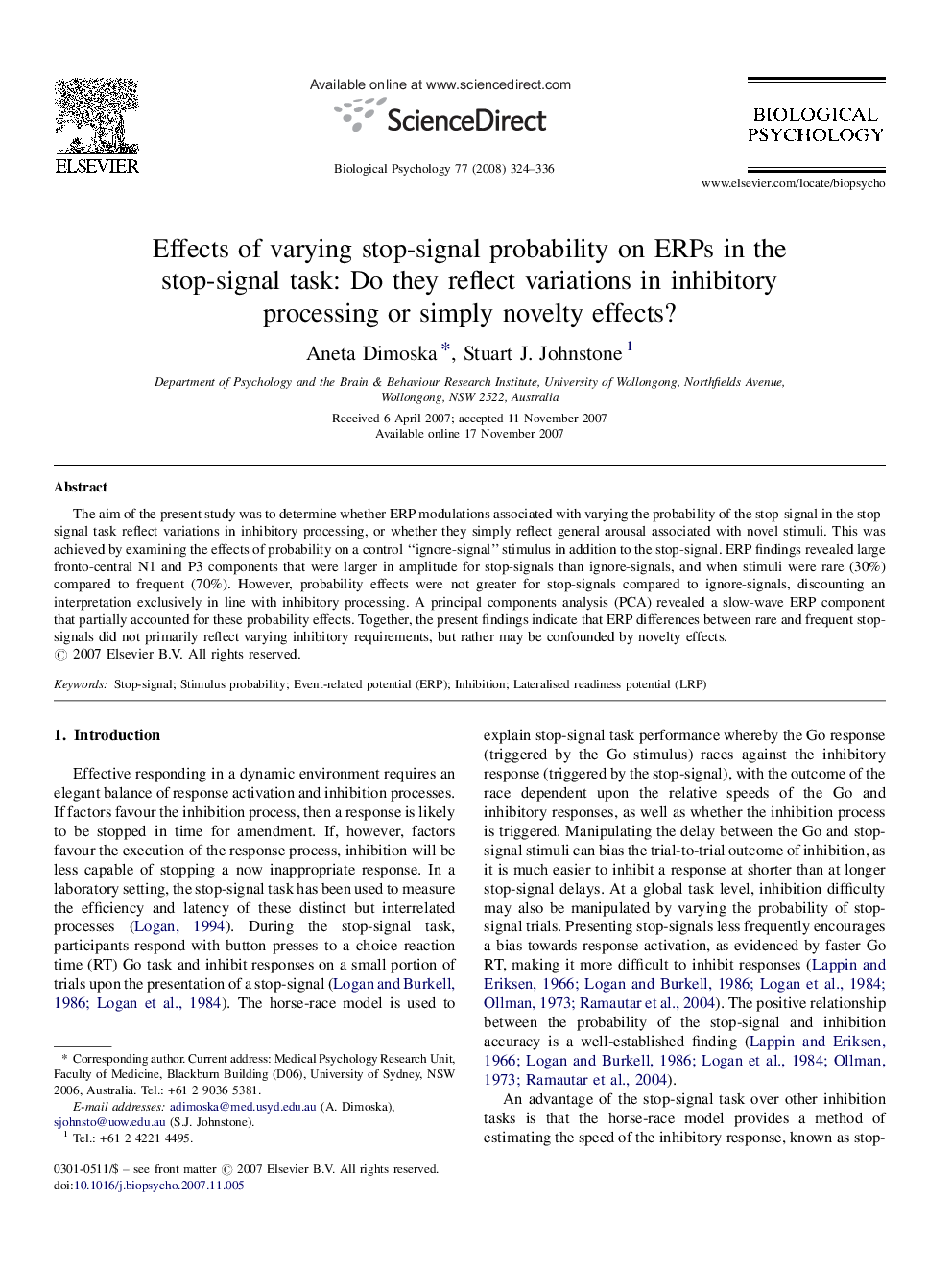| Article ID | Journal | Published Year | Pages | File Type |
|---|---|---|---|---|
| 921594 | Biological Psychology | 2008 | 13 Pages |
The aim of the present study was to determine whether ERP modulations associated with varying the probability of the stop-signal in the stop-signal task reflect variations in inhibitory processing, or whether they simply reflect general arousal associated with novel stimuli. This was achieved by examining the effects of probability on a control “ignore-signal” stimulus in addition to the stop-signal. ERP findings revealed large fronto-central N1 and P3 components that were larger in amplitude for stop-signals than ignore-signals, and when stimuli were rare (30%) compared to frequent (70%). However, probability effects were not greater for stop-signals compared to ignore-signals, discounting an interpretation exclusively in line with inhibitory processing. A principal components analysis (PCA) revealed a slow-wave ERP component that partially accounted for these probability effects. Together, the present findings indicate that ERP differences between rare and frequent stop-signals did not primarily reflect varying inhibitory requirements, but rather may be confounded by novelty effects.
